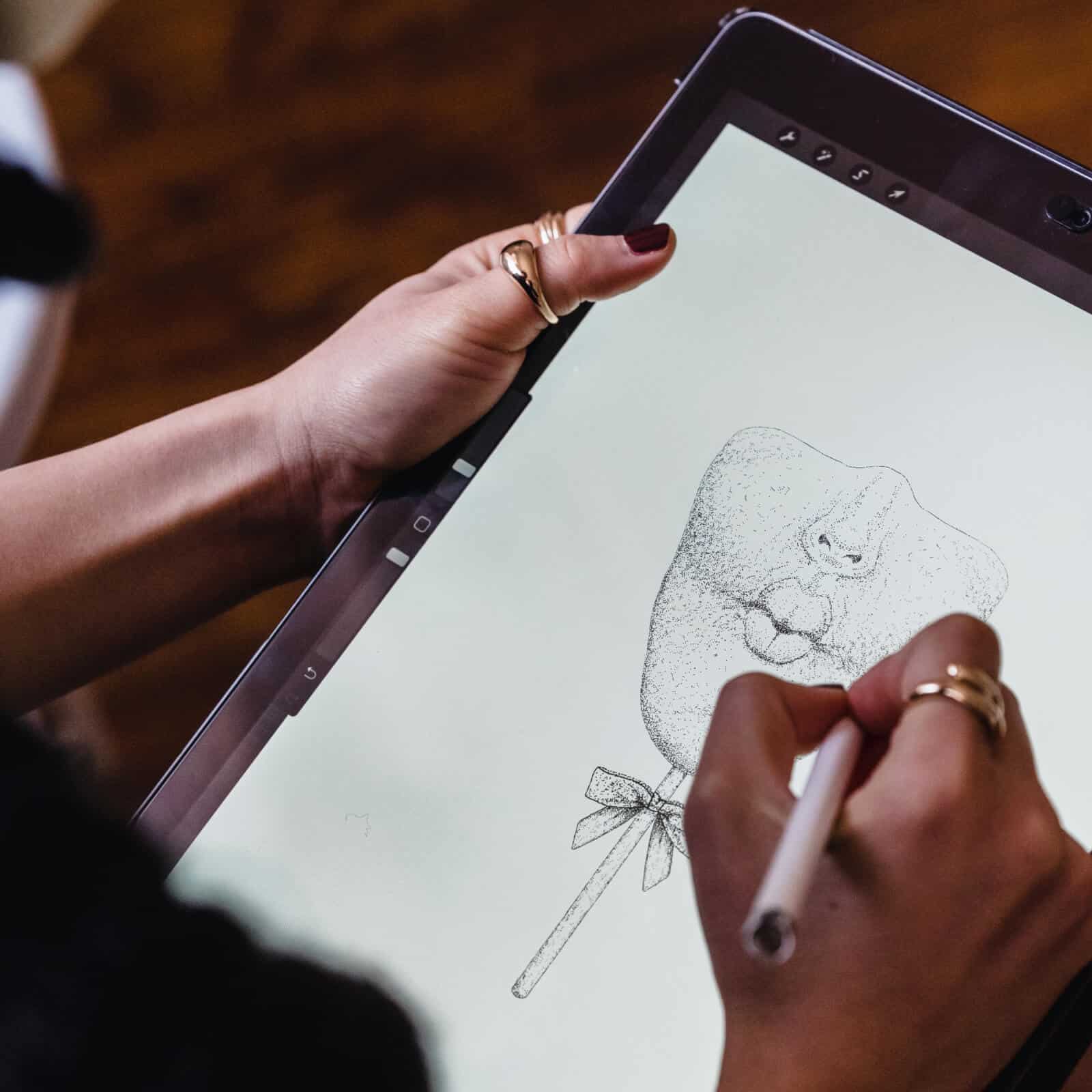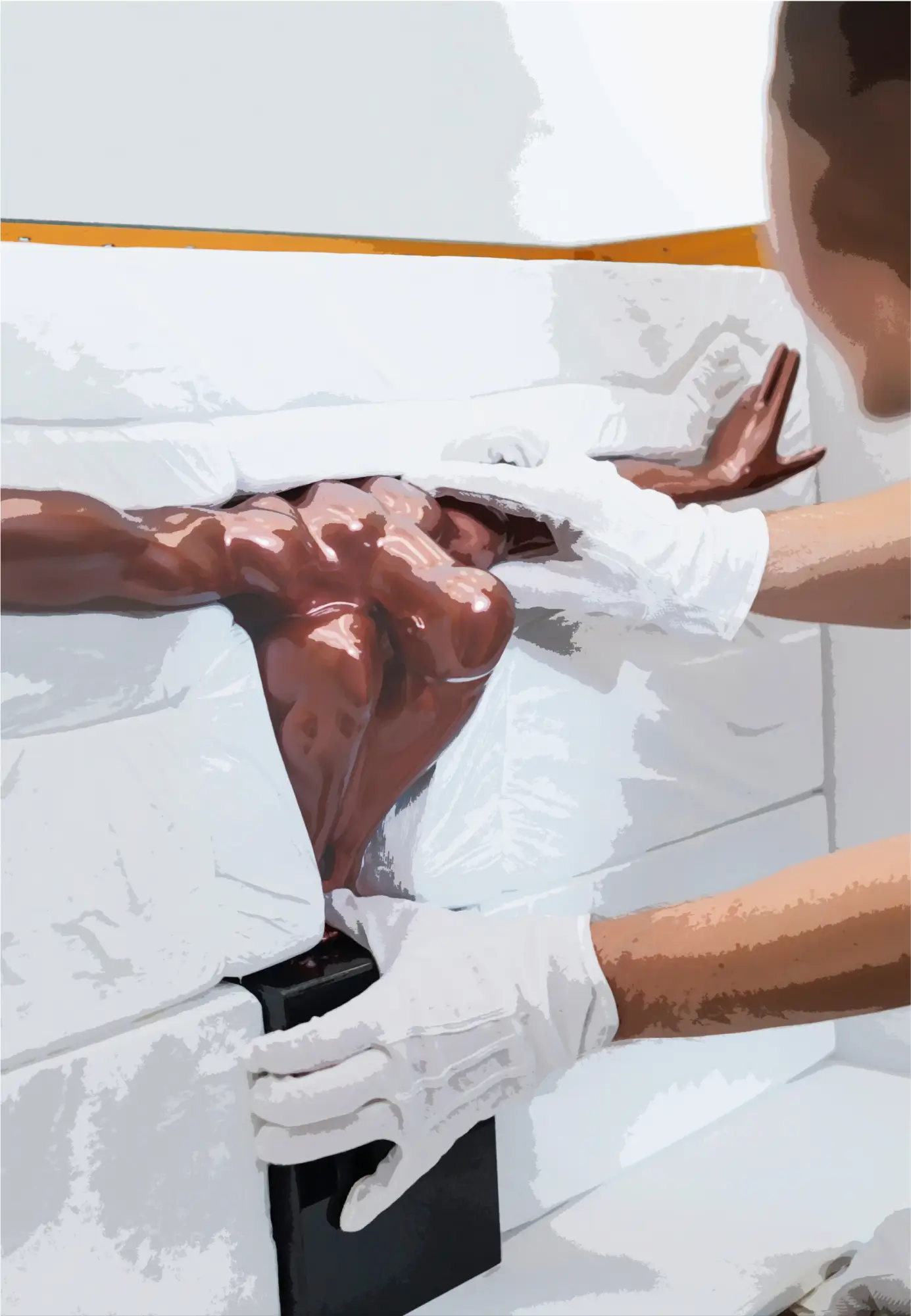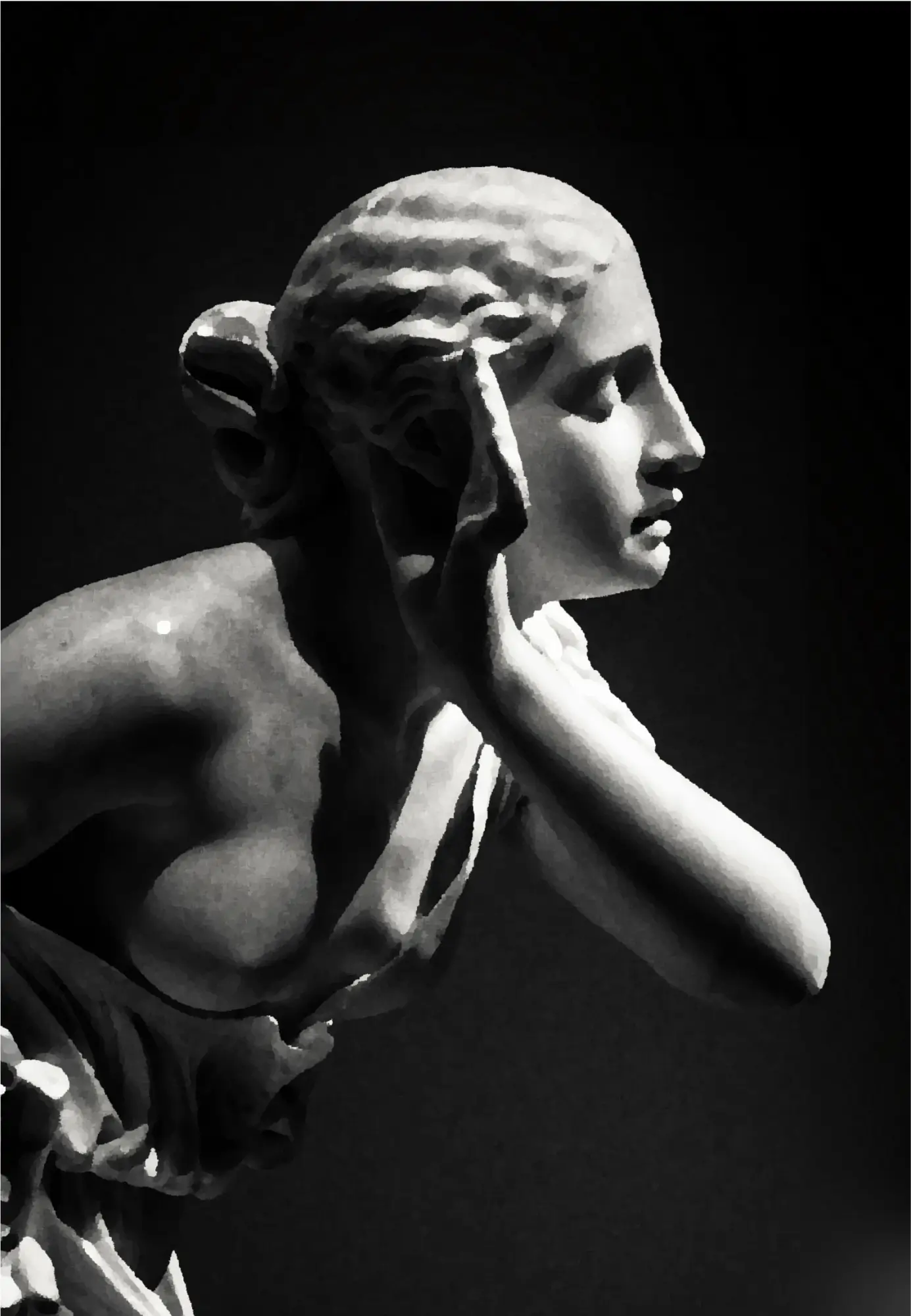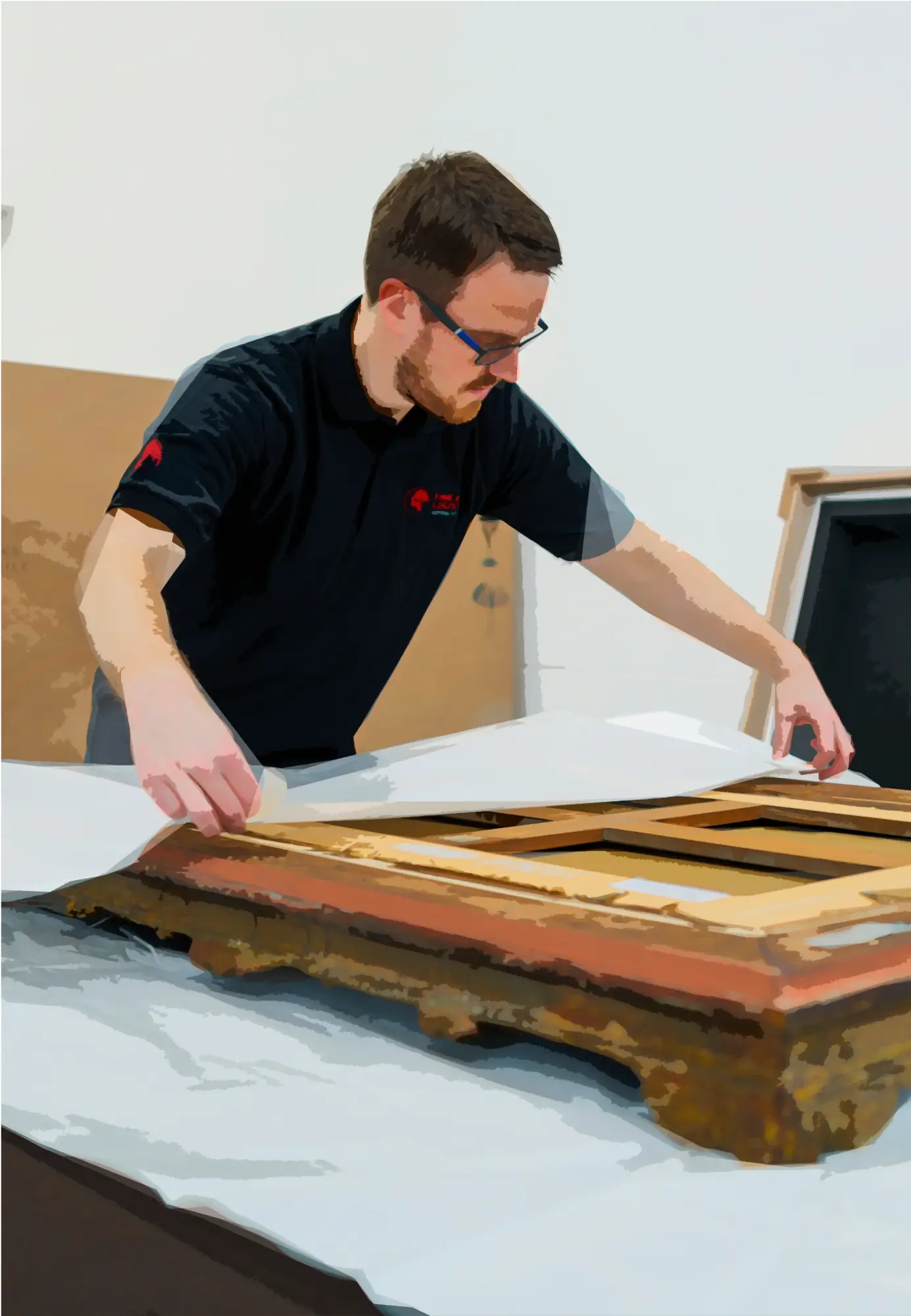Fortius, a renowned expert in the field of art storage, has been invited by porch.com to share their extensive knowledge in a feature dedicated to the protection of artworks.
In this article, we have compiled the topics covered in this discussion, providing the ultimate guide to protecting and storing artworks.
Whether you're a passionate collector or a budding art enthusiast, these expert tips will help you preserve the beauty and value of your collection.
Precautions for Handling and Transporting Delicate Artworks
In her response, Kerrie Kelly, an art expert, shares essential precautions to prevent damage when handling and transporting delicate artworks. She emphasizes the importance of careful preparation by assessing the fragility of each piece and adapting measures accordingly based on its materials and dimensions.
Kerrie highlights the significance of proper packaging using protective materials such as acid-free tissue paper, bubble wrap, or foam. She stresses the cleanliness of the materials to avoid potential scratches or marks. During handling, she recommends wearing protective gloves, keeping hands clean and dry, and lifting the artwork with minimal pressure on solid areas.
The expert also emphasizes the importance of obtaining adequate insurance coverage to protect against potential damages and documenting the condition of the artwork through photographs before and after packaging. These precautions offer peace of mind and serve as evidence when needed.

Sustainable Preservation of Digital Artworks and New Technologies
In the porch.com article, the interviewed expert advises several strategies to ensure the long-term preservation of your digital and multimedia art collection. One key recommendation is to use asset management software, as mentioned in the article. This type of software allows for creating backups and establishing file redundancy, thereby reducing the risk of data loss. Additionally, metadata management is essential for documenting and organizing detailed information about each artwork. Regular file integrity checks and audits are also recommended to identify and resolve potential issues.
Transporting and Installing Large or Outdoor Artworks
When it comes to transporting and installing large or outdoor artworks, taking precautions to ensure their safety and preservation is essential.
In the porch.com article, the expert emphasizes the importance of selecting appropriate transportation methods, properly packaging the artwork, and carefully coordinating the delivery and installation process.
As experts in art transportation, Fortius shares these tips to guarantee the optimal protection of artworks during their relocation and installation.
Furthermore, we are at your service to arrange the transportation of your artworks from Luxembourg Airport's Tarmac.
Strategies to Avoid NFT-Related Scams in the Digital Art Domain
In the realm of digital art, adopting strategies to avoid falling into the traps of non-fungible token (NFT) scams is crucial.
The expert consulted in the porch.com article advises conducting thorough research on NFT creators, verifying their legitimacy, and favoring trusted platforms for transactions.
They also caution against overly enticing offers, pressures to make hasty decisions, and requests for payment through insecure channels.
By following these recommendations, you can navigate the exciting world of NFTs with confidence while avoiding potential pitfalls.

Protection and Preservation of Delicate Artworks, such as Calligraphy and Watercolors
According to Lindsey Bugbee, an expert in calligraphy and mail art, protecting and preserving delicate calligraphy and watercolor artworks is essential.
For this purpose, she recommends two main options: the use of MicroGlaze and a spray fixative.
MicroGlaze, similar to vaseline, provides effective protection against moisture, dirt, and smudging. Lindsey advises applying a thin layer of MicroGlaze and ensuring that the calligraphy is completely dry beforehand to prevent smudging.
While it may give the paper a slight sheen, MicroGlaze is highly appreciated for its ability to safeguard artworks.
Assessing Risks and Vulnerabilities of Your Art Collection
According to Alicia Puig, an expert in contemporary art, evaluating potential risks and vulnerabilities of your art collection is crucial for its protection.
She recommends creating records for all the artworks you have purchased, allowing you to insure them for their full value.
Alicia emphasizes the importance of considering the support and material of each artwork, using archival-quality materials, and avoiding direct exposure to sunlight, which can lead to fading over time.
It is also vital to protect artworks from moisture and promptly contact a professional art conservator in case of any issues.
Alicia warns against the risks of artworks being misplaced or inadequately secured, leading to accidental falls or spills.
She reminds us that protecting an art collection requires effort, but by following these simple guidelines, you can enjoy your artworks for many years to come.
Protection of Artwork Displayed in Public Spaces of Your Home
According to Katerina Wagner, a performing arts expert from Miami, there are several measures to take to protect your artwork when it is displayed in the public spaces of your home in order to prevent theft and damage.
First and foremost, it is important to create an organized inventory of your art belongings, taking photos and documenting each piece of artwork.
Secondly, it is essential to obtain specific insurance coverage for your artwork. This will provide financial protection in the event of damage, loss, or theft of any piece or art collection you own.
In addition to insurance and documentation, there are other ways to secure your art collection displayed in the public spaces of your home.
The primary method of protection is a robust home security system. It is recommended to invest in a professional security system that detects any unauthorized entry through all entry and exit points of your home.
It is also advised to install motion detectors and motion-activated surveillance cameras to deter intrusions.
To minimize risks, we recommend engaging a specialist such as Fortius to store your artwork that is not intended to be displayed in your home.
By doing so, you can enjoy all the benefits that our facilities are capable of providing.

Preventive Measures to Protect Your Art Collection from Insects and Pests
Oliver Lonergan, a professional art hanger, proposes preventive measures to protect your art collection from damage caused by pests and insects.
He recommends keeping framed artworks clean by regularly wiping them with a lint-free cloth.
It is also essential to store them in a dry place, away from moisture, and periodically check the condition of the frames to ensure they are properly sealed.
For long-term storage, use acid-free materials such as archival boxes or portfolio cases to prevent direct contact with damaging elements.
Finally, hiring a professional to hang the artworks ensures they are perfectly fitted against the wall, reducing the risk of dust and insects getting behind the pieces.
Adapting Protection Strategies for Each Artwork in Your Collection
Andrea Bogart, an art expert and advisor, offers customized protection strategies for each individual piece in your collection, taking into account their unique characteristics and materials used.
She emphasizes the importance of preparation before the artwork's arrival by engaging a professional installer or acquiring the best available installation supplies.
It is essential to know the details of the artwork, both front and back, to minimize the risk of damage.
Security Systems and Technologies for Protecting Your Home Art Collection
Sandra Pelletier from Sorelle Gallery recommends several security measures and technologies to implement for protecting your home art collection.
She advises monitoring humidity levels in the room where the artworks are located using a hygrometer to maintain optimal levels between 40 and 60% relative humidity.
In case of humidity issues, especially in basements, she suggests using a dehumidifier to maintain a regulated environment.
For high-value art collections, opting for live video surveillance systems with professional security supervision is possible for a monthly fee.
Finally, consulting your insurance company for personalized recommendations based on your geographical location is recommended.
By implementing these security measures, you can ensure the protection of your home art collection.

What advice can you give regarding investing in fine art and ensuring its protection and preservation?
As art experts, we would provide some valuable advice to the Porch.com audience on investing in fine art while ensuring its protection and preservation.
First and foremost, we recommend developing an understanding and artistic taste by visiting museums, exhibitions, and consulting specialized sources of information. Working with art experts and reputable galleries allows you to evaluate the authenticity and value of the artworks you consider acquiring.
Once you have built your collection, proper storage is crucial. Avoid direct exposure to sunlight, extreme temperatures, and high humidity. To frame your artworks, use glass or UV-filtering Plexiglas to protect them from light damage.
If you own high-value artworks, our expertise in art storage and security will be invaluable. At Fortius, we have ultra-secure facilities specifically designed to provide an optimal conservation environment.
Ensure that you also have appropriate insurance coverage for your collection. Fortius offers unlimited insurance capacity in our facilities to provide optimal protection for your investment.
Finally, carefully document your artworks by taking photographs, keeping detailed descriptions, and gathering information about their provenance. This valuable documentation will be useful for future references, appraisals, sales, and insurance claims.
Dos and Don'ts of Using Wall Hooks to Hang and Protect Your Artworks
Expert Arthur Harrison from Picture Hang Solutions shares practical advice on using wall hooks to hang and protect your artworks.
First and foremost, it is crucial to know the weight of your artwork in order to choose a suitable hook that can support 1 to 3 times that weight.
When installing the hooks, it is essential not to drive the nails with excessive force, as this could result in undesired damage such as bent nails or cracks in the wall.
By following these recommendations, you can safely hang your artworks, preserving the integrity of your walls.
Best Practices for Protecting, Maintaining, and Cleaning Wall Art Prints
Lazar Gintchin from Gintchin Fine Art shares his best practices for protecting, maintaining, and cleaning your wall art prints.
He recommends framing the prints to protect them from damage caused by light, heat, pollution, and humidity.
Two common options are glass frames and acrylic mounting. Acrylic mounting seals the print between layers of acrylic with archival adhesive, providing superior protection.
Proper mounting is also essential to prevent damage from falling.
Precautions should be taken regarding temperature and light exposure, as well as maintaining optimal humidity levels.
Recommended Practices for Handling and Cleaning Photos at Home
Alex Martinez from Yesterdays shares the best practices for handling and cleaning photos at home to avoid causing unintentional damage.
He emphasizes the importance of preserving the invaluable memories captured in photographs while acknowledging their vulnerability to the effects of time, environment, and mechanical factors.
To extend their lifespan, he recommends using archival materials and frames, protecting photos from direct sunlight, and controlling humidity levels. Alex also encourages creating backup copies or digital duplicates to prevent potential losses.
Key Considerations for the Protection and Preservation of Luxury Handmade Paintings
Nasreen Navas from Artecasso shares key considerations for protecting and preserving luxury handmade paintings in your home to maintain their aesthetic value and emotional impact.
She recommends choosing a location without direct sunlight exposure, opting for high-quality frames with protective materials and glass to prevent environmental damage, regularly cleaning the artworks with care, and controlling the climate to maintain optimal conditions.
Nasreen also emphasizes the importance of engaging a professional conservator for valuable or fragile paintings to perform necessary treatments while preserving the integrity of the artwork.

Optimizing Environmental Conditions for Preserving Your Home Art Collection
Niki Kapopoulou from The Art Dose highlights the importance of optimizing the environmental conditions in your home to protect the longevity and market value of your art collection.
She emphasizes the significance of working with an art professional who considers ideal conditions for each artwork.
Factors such as humidity, pollution, sunlight, and temperature increase due to climate change should be taken seriously to avoid long-term damage to the artworks.
Niki also mentions factors to consider such as air filters/purifiers, avoiding proximity to water, and being mindful of direct sunlight.
Best Practices for Protecting Acrylic Paintings and Artworks on Paper
KR Moehr from Abstract Art By Kr Moehr shares best practices for protecting acrylic paintings from potential damage.
When storing your artworks, it is recommended to use non-acidic or glassine paper on the surface of the painting.
Then, wrap the artwork in bubble wrap for protection, especially during transportation. Avoid storing your paintings in humid or hot locations and always try to lay them flat to prevent frame warping.
If you are hanging the artwork, choose a location with low to medium natural light to protect the painting. Avoid exposing it to intense direct light as it can deteriorate the paint, pigments, and cause discoloration.
Always use sturdy nails, hooks, and hanging materials to prevent the artwork from falling and causing potential damage.
It is advisable to know the weight of the artwork and purchase suitable hanging materials to properly support it.
Measures to Preserve the Quality of Historic Family Photos in a Home Environment
Richard Tarrant from Frame Today shares tips on preserving the quality of your historic family photos in your home environment.
He advises considering the location where you want to display your photos, choosing appropriate conservation framing to protect the photos, and hanging them correctly using proper techniques and hanging materials.
He emphasizes the importance of selecting high-quality frames and considering conservation aspects to preserve your precious historic family photos.
Entrust your storage to professionals to ensure the integrity of your artworks.
The best practices mentioned in this article are integral to our daily approach to art storage and logistics. With our expertise in conservation, climate-controlled environment, enhanced security, and commitment to the highest standards, we provide our clients with an ultra-premium service to preserve the value and integrity of their collections.
If you are seeking safe and professional storage for your high-value artworks, we invite you to choose Fortius.
Our free port storage facility in Luxembourg offers unique benefits, ranging from tax advantages to complete privacy, along with customized services tailored to your specific needs. Trust Fortius for the protection and preservation of your exceptional art heritage.
For more detailed information on each topic covered, we recommend reading the full article on porch.com.





